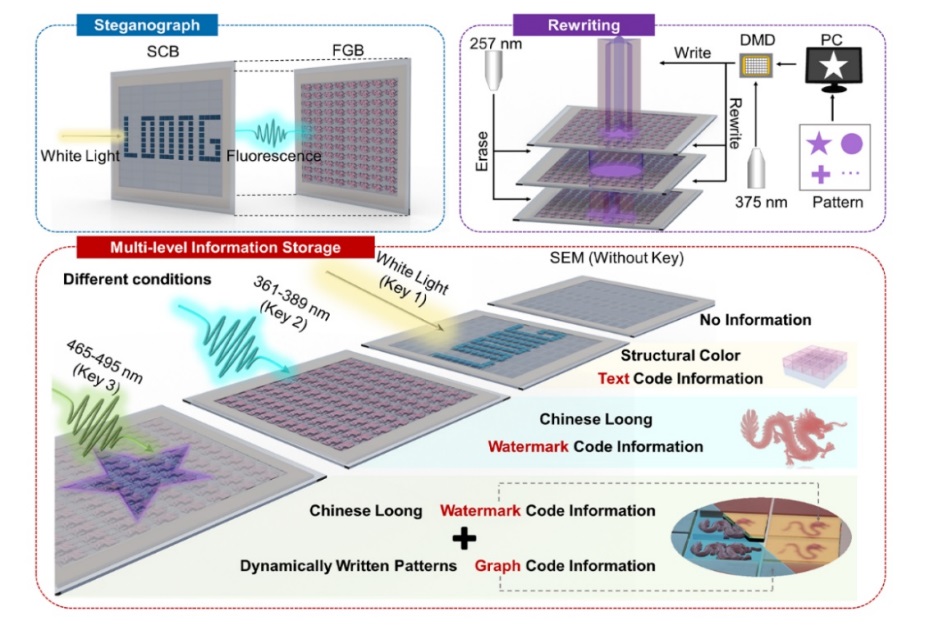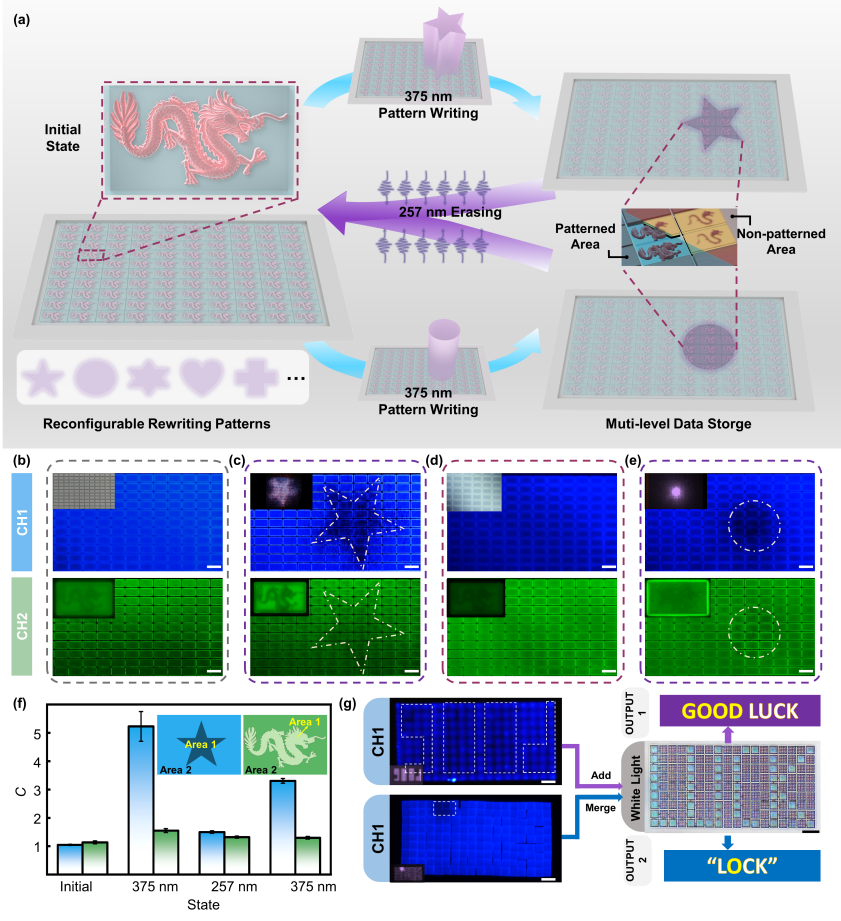
Schematic Diagram of Micro-Dynamic Multiple Encryption Methods (Image by the research group)

Reconfigurable Storage–Erasing–Rewriting of Multilevel Information Device (Image by the research group)
In the field of secure information storage, optical encryption has become a key technology, particularly amidst the trend towards miniaturization of encryption devices. However, conventional optical encryption methods often struggle to meet the demands for finer applications in miniaturized scenarios, and their single encryption strategy is vulnerable to decryption. Furthermore, research in traditional optical encryption has generally overlooked the design of dynamic responses across the time dimension. Even the few existing time-dimensional encryption schemes suffer from issues such as poor programmability. Achieving the synergistic integration of spatial encryption and temporal dynamic control, while simultaneously addressing the three core requirements of miniaturization, high security, and rapid modulation, has long been a critical scientific bottleneck hindering the practical application of this technology.
Recently, a joint research team from the Shenyang Institute of Automation (SIA) of the Chinese Academy of Sciences (CAS), and City University of Hong Kong proposed an ultra-precision micro-nano manufacturing method for storage encryption, realizing enhanced steganography and multilevel information storage.
The team designed a micro-dynamic multilevel encryption device based on coumarin metamaterials, employing a direct laser writing grayscale gradient strategy to achieve programmable control over optical properties. This method enables the dynamic modulation of photoluminescence characteristics and cross-linked network structures, supporting novel steganographic techniques under different lighting conditions. By integrating a multi-optical field control system, real-time tuning of material properties was achieved, significantly enhancing the device's reconfigurability and storage capacity. These findings reveal the application potential of such metamaterials in the field of micro-scale optical encryption, paving a new path for advancements in dynamic storage and information security.
This research, entitled Tunable optical metamaterial enables steganography, rewriting, and multilevel information storagehas been published inNano-Micro Letters. Jianchen Zheng, a Ph.D. student from SIA, and Yuzhao Zhang, a Lecturer from Shanghai University, are the co-first authors of the paper. Professor Wen Jung Li from the City University of Hong Kong and professor Haibo Yu of SIA are the corresponding authors.
The work was supported by the National Key R&D Program of China, the National Natural Science Foundation of China, the CAS International Cooperation Key Project, and the CAS Cross-Innovation Team project, among other funding sources.